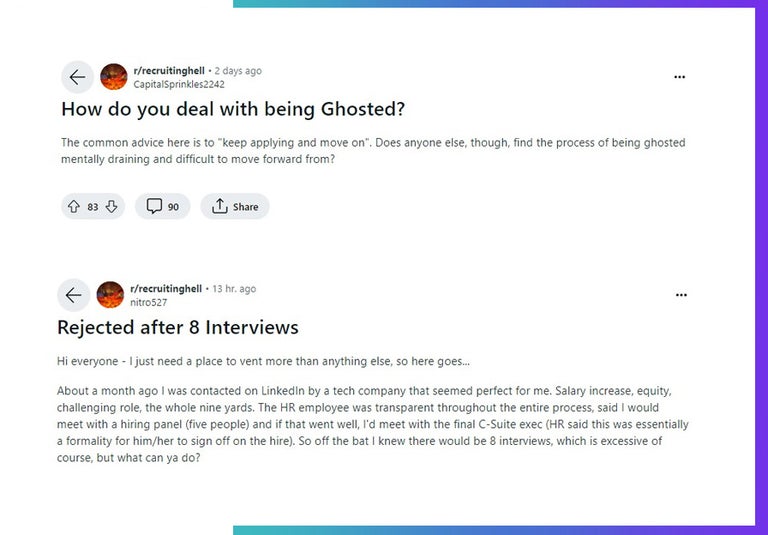Contents
- 1. Switch From Buckshot to Red Velvet Rope
- 2. Move From Standby to Standout Candidacy
- 3. Focus on Comebacks Not Setbacks
- A Whole New World: The Magic of Applying Yourself
Traditional tech job hunting can feel like a fast track to nowhere. It’s time to unlearn how you’ve been taught to apply for jobs, so that you can adopt three counterintuitive tactics that will actually land you that remote role.
- Do you send hundreds of applications every month?
- Do hiring managers ghost you?
- Do you get furious when recruiters don’t give you feedback?
Been there, done that.
I’ll explain how I broke out of that mindset in a minute.
I’ve been working remotely for 15 years with tech giants dotted around the globe - from Arizona to Melbourne.
I spent many brutal years facing the dizzying truth of tech selection: being global also meant much more competition.
Initially, nothing worked. I had to find out what did.
These days the odds of getting a remote job are slimmer than spanks on a keto diet.
There are less remote roles around, and more people (98%) who want them. A single job can attract thousands of applicants, from everywhere.
The odds of landing a remote job with 1700 applicants is around 0.06%. That’s 60X harder than making it into Harvard, and about as likely as being born on a leap year day.
And the most experienced people? They usually don’t get the jobs.
It’s the tech folks with a specific kind of mindset that rise to the top. So, clinging to obsolete tactics won’t help you here.
Luckily there are better ways to stand out as someone who refuses to compromise on working remotely. I believe remote work is a right, not a privilege.
But no-one is going to hand you that freedom on a silver platter: You have to take it.
Less luckily - you don’t know what you don’t know. This article will change that. Here’s how to fix your approach to applying for tech jobs in 2024.

DISCLAIMER: These negative experiences were sourced from r/recruitinghell on Reddit and have nothing to do with Crossover.
1. Switch From Buckshot to Red Velvet Rope
- “I’ve applied to over 900 jobs in the last year and only got 2 interviews.”
- “You should be applying to 30+ positions per week.”
Sound familiar?
You should never think that application volume is the solution to securing a remote job. The ‘take what I can get’ mentality is a stellar way to exhaust your time and energy.
Traditional job hunting says:
- Apply to multiple jobs in your niche
- Customize your resume for each and every application
- Invest serious effort into trying to land the job (network, network, network!)
For the average person, this translates into a strong start that progressively gets weaker and more frantic – the longer they’re unemployed. Eventually it becomes harassed emails, unsolicited LinkedIn messages, and a bad attitude that HR Managers avoid.
The buckshot technique doesn’t work.
It makes you invisible. It makes you wait. It makes you desperate.

Instead, what you need is a fresh approach.
One that redirects your focus and energy, and doesn’t dement you in the process. You need to go from a ‘search’ mindset to an ‘attract’ mindset. From communicating your value externally, to holding it internally.
At the start of my career, I read a book that helped me shift my perspective.
The book was called ‘Book Yourself Solid’ by Michael Port and it promised just that – to end the vicious cycle of job searching that made it impossible to do any real work.
For remote workers, one policy has particular value: The Red Velvet Rope.
This strategy emphasizes selectively choosing clients who are most aligned with your values and energize you, like a bouncer at an exclusive club who only allows certain people into the VIP area.

In other words, filter out JOBS that don’t align with your goals and your energy – to create more space, time and resources for the ones that do.
- Spend more time finding jobs worth applying for
- Invest in making yourself a stand-out candidate for those jobs
- Reject any/all jobs that don’t meet your needs as a remote worker
What’s the point of landing a low-paying job with people you don’t want to work with? Applying with the red velvet rope mindset keeps you on track for remote success.
VIPs Get the Basics Right:
- Spend less time on your resumes / applications
- Use AI to streamline your cover letter / resume (if you have to)
- Make sure your social media isn’t just work-friendly but an asset for you (70% of employers will check on your profiles)
- Check that your resume works with applicant tracking systems (97.4% of Fortune 500 companies use these to filter candidates)
The best side effect of The Red Velvet Rope approach is that it prevents burnout.
Because I’ve always aligned with the jobs I’ve won, they give me energy and inspire me – instead of depleting finite energy resources.

You can do so much more with the right job.
2. Move From Standby to Standout Candidacy
You’ve just done your 5th interview and the email comes in. It’s a no.
Or worse – you never hear from the hiring manager again.
Being ghosted is worse than rejection because it’s cold and clinical. The message is clear: “You no longer have value for us, so we no longer care about you.”
Ouch.
Emotionally, this process can be extremely draining, especially when you’ve emotionally invested so much time and effort into your application and interviews.
So, you wait. Or you contact the recruiter repeatedly.
Don’t do that.

It’s true that you should move on right away, and never linger. But that doesn’t mean moving onto applying for 800 more positions in a shame spiral.
Instead, I’ll give you some advice I wish someone gave me years ago: build your online portfolio.
While searching for your red velvet rope jobs, and shortcutting your way through inane cover letters and resumes – strengthen your online presence. It matters.
I was once asked why freelancers can find endless work, while similarly skilled remote workers struggle to get past the interview stage for full-time positions.
And the answer lay in portfolios. Some 58% of freelancers have a portfolio packed with work, experiences, and results. Mine helped me go from freelancer, to full time contractor without a missed beat.
Making your portfolio strong is a power hack for remote workers.
That way when you get to the interview stage, you don’t have to hastily list your achievements, you can allude to them to rouse the curiosity of the recruiter.
If you spent as much time on your portfolio as you did applying to bad jobs, you’d have your dream position by now!
In tech if you don’t have an online portfolio, your chances of impressing a hiring managers plummets.
Some Tips:
- Less is more in interviews – get hiring managers to your portfolio
- Invest time, money and effort into making yours a cut-above the rest
- Your portfolio is like a highlights reel, only include your best work
This ‘show don’t tell’ attitude and moving from standby to standout is exactly what extremely time-strapped hiring managers and recruiters look for.
If you can make their lives easier, they are more likely to hire you. Give them an irrefutable WHY in portfolio form.
3. Focus on Comebacks Not Setbacks
Ever sat across from someone raging about not getting feedback for the twelfth interview they attended? It happens a lot.
Yet so many candidates also refuse to engage with more modern hiring practices, like third party test taking and live work sampling that saves them time.
- “I’ll never spend time doing tests. That’s too much time investment.”
- “They can at least tell me why I didn’t get the job.”
They could, but they won’t. Because doing that 1699 times would cripple the recruiter. This isn’t Smallville from the 50’s. And blame will get you exactly nowhere.
Controversial opinion I know - but righteous indignation is so much easier than dedicating time and effort to learning how to ace tests and be good on camera.
Doesn’t it make more sense as a remote worker, to learn outside of hiring managers?
You do have the entire internet at your disposal. Feedback is an amazing tool for improving yourself, but it’s rare. Accept that and educate yourself.

Automation is rife in remote recruiting, it’s only going to escalate with AI.
Automated systems will filter your resume out. So why not help yourself standout by becoming really good at taking tests?

That way you can ditch resumes altogether and apply for positions where skills are valued. Train yourself to be human and friendly on camera. It’s a must-have skill for someone working in the virtual space.
Instead of focusing on a blame loop that reinforces how tough it is to get hired in tech right now, focus on a skills loop – that makes you better and keeps you learning.
A Whole New World: The Magic of Applying Yourself
It comes back to the Red Velvet Rope approach.
Applying for a remote tech job is like trying to get into the hottest VIP party in town.
You're outside, alongside a crowd, and each person is eagerly trying to convince the bouncer to let them past the red velvet rope. It's a tough sell because it relies on external validation to prove worth.
Now picture a celebrity approaching.

They don't plead or persuade. They just walk up, and the rope is lifted. They know their value, and so does everyone else. It's not about external approval at all. Their confidence and reputation precede them.
This is the essence of the Red Velvet Rope strategy in tech job hunting.
Instead of desperately trying to prove your worth to every remote employer, you expand your skills and reputation to the point where they're undeniable.
You choose opportunities that align with your values and strengths, where you're not just another applicant - but a sought-after hire.
It's about holding your value internally, knowing your worth, and choosing where you contribute. That’s how you turn the tech job hunt from a plea for entry, into a mutual recognition of fit.
That’s how you standout.
Do this, and you’ll find yourself landing more interviews and securing work that not only keeps you remote, but accelerates your career AND makes you happy.








